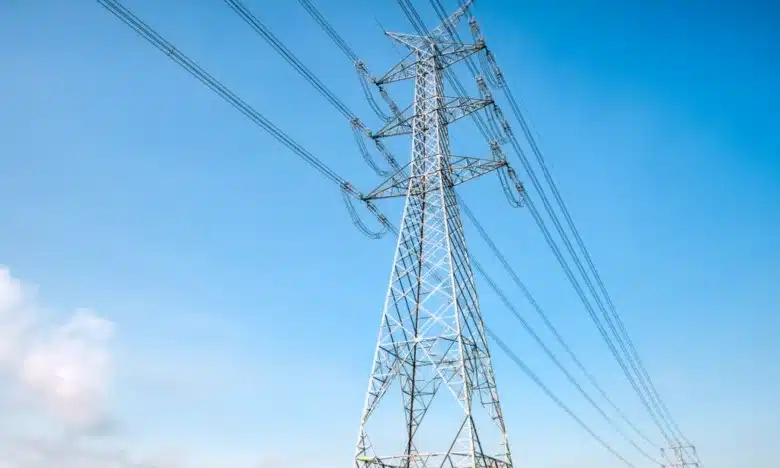
Securing a Stable Power Supply Crucial for Lowering Electricity Prices in the PH
- April 21, 2025
Energy prices have been decreasing globally.
Coal, in particular, is experiencing a price drop due to oversupply and weak demand. With major importers, including China and the EU, pulling back, market research firm BMI forecasts thermal coal prices to average $130 per ton in 2025, down from $174 per ton in 2023.
Meanwhile, analysts from Argus Media anticipate that API 2 coal prices will decrease from an average of $112 per ton in 2024 to approximately $105 per ton in 2025. This decline is attributed to slowing economic growth, oversupply of steel in China, and a strengthening US dollar.
In his article, Minimal Government Thinkers President Bienvenido Oplas pointed to a global economic slowdown as the main driver behind falling energy prices. With demand weakening and supply holding steady—mirroring past aggressive production policies—there’s little need to stockpile fuel. As a result, prices for oil, gas, and coal continue to decline.
(Also read: DOE Begins Evaluating Possible Nuclear Plant Sites)
Lower global prices, higher PH prices
From late February to March 2025, the country experienced a significant increase in electricity demand, driven by extreme heat, with demand rising by 5.9% to 13,670 megawatts (MW). Simultaneously, the available supply dropped by 4.4% to 19,611 MW, which was attributed to forced outages and the reduced capacity of several power plants.
On March 5, the Luzon grid was placed under a “Yellow Alert” due to thin power reserves, indicating that the power supply could barely meet the demand.
Global energy prices are falling due to weak demand and steady supply, but electricity costs in the Philippines are rising because of local power shortages. For Oplas, the solution lies in expanding large-scale power generation facilities. He wrote, “The lesson here is that we are not building enough big conventional power plants to complement if not substitute for old and aging plants.”
Increasing power generation, especially from stable sources like coal boosts supply and encourages competition, which can help lower electricity prices if demand remains steady. A wider reserve margin also makes the system more stable, reducing the risk of price spikes during peak demand or unexpected outages. More capacity means fewer supply crunches—and fewer surges in cost.
(Also read: Meralco Sees Higher Electricity Rates This April)
The drawbacks of RE
Economist Robert Idel, using his Levelized Full System Costs of Electricity (LFSCOE) method, assessed renewable energy (RE) costs in the Philippines, factoring in storage and backup needs for wind and solar. His 2024 study found that while wind has higher overall capacity, its efficiency drops in summer, making it costly and unreliable compared to solar. Wind power also struggles with limited infrastructure in Mindanao.
Solar energy faces its own challenges: land scarcity and high land costs make large-scale solar farms less feasible. Idel concluded that neither wind nor solar is currently cost-competitive with dispatchable power like natural gas and nuclear. Moreover, high battery storage costs, which need to drop by 80% to become viable, further complicate the shift to RE.
“Peak demand for electricity happens at noon and in early evening when people are coming home and lights in houses and streets are open, so we cannot rely on solar farms unless they have batteries,” Oplas wrote.
He also highlighted the tight energy supply in the Visayas, a concern that Cebu Governor Gwendolyn Garcia has repeatedly raised, warning that it could impede the region’s rapid economic growth.
In 2024, Garcia backed plans for baseload power plants in Cebu as the Department of Energy projected demand to reach 1,400 MW by 2026, potentially exceeding supply by 2027 without new capacity.
According to Oplas, solar farms have rapidly expanded in provinces like Negros Occidental, but this has created pressure on neighboring grids. Coal-fired plants in Cebu and Panay are now shouldering much of the load, not just for their islands but also to supply power to Negros.
He wrote this has prevented “blackout in these three islands with big population (at least five million people each) and big commercial activities.”
Is coal the real enemy?
The Department of Energy (DOE) acknowledges coal’s role in the energy mix. In 2024, the DOE identified around 7,000 MW of power projects slated for completion by 2025, including 500 MW of coal capacity, to enhance energy sustainability and meet rising electricity demand.
Just this year, DOE revisited plans to fast-track the retirement of the 232-megawatt coal-fired power facility in Mindanao. The move stemmed from growing concerns that an early shutdown might trigger power shortages, especially with regional demand expected to climb 8.2% and hit 2,789 MW by 2025.
Elsewhere in Southeast Asia, Vietnam, regarded as “the fastest-growing economy” in the region is projected to import 86 million tons of coal by 2035. This surge primarily supports electricity generation, reflecting efforts to meet growing energy needs.
Indonesia continues to rely on coal-fired power plants to ensure domestic energy security. While the government plans to gradually decommission aging coal plants, they remain a significant part of the energy mix. Additionally, Indonesia is expanding its oil and gas exploration to bolster energy self-reliance.
Malaysia has also seen heightened coal reliance for power generation, driven by increased electricity consumption from sectors like data centers.
Economic losses are a significant concern if coal is eliminated too quickly. The International Labour Organization (ILO) cautions that a rapid coal phase-out in countries such as the Philippines may cause substantial job losses. Regions dependent on coal would face a decline in both direct and indirect employment, potentially disrupting local economies and livelihoods.
In his article “More coal, more growth, cheaper electricity,” Oplas highlighted the connection between coal consumption and economic growth in Asia. He noted that the fastest-growing major Southeast Asian economies in 2024—Vietnam, India, the Philippines, and others—are all significant coal consumers.
Oplas pointed out that these nations consistently achieve high GDP growth, with Vietnam leading at 7%, while countries reducing their coal use, like the US and Germany, have experienced slower growth. This suggests that coal plays a key role in driving economic progress.
Sources:
https://www.edgarindex.com/2025/01/19/coal-market-forecast-prices-expected-to-decrease-in-2025
https://business.inquirer.net/510343/luzon-grid-on-yellow-alert-on-march-5
https://drive.google.com/file/d/19PQgA5jhDs0mC8AK8RvCtapFFUV1F9R-/view
https://tribune.net.ph/2024/02/05/cebu-governor-wants-assured-power-supply
https://business.inquirer.net/501009/renewables-dominate-pipeline-of-new-power-projects-in-2025
https://aseanenergy.org/wp-content/uploads/2025/02/ASEAN-Energy-in-2025.pdf
https://www.ilo.org/publications/just-energy-transition-southeast-asia-impact-coal-phase-out-jobs
https://www.bworldonline.com/opinion/2025/01/09/645399/more-coal-more-growth-cheaper-electricity/



